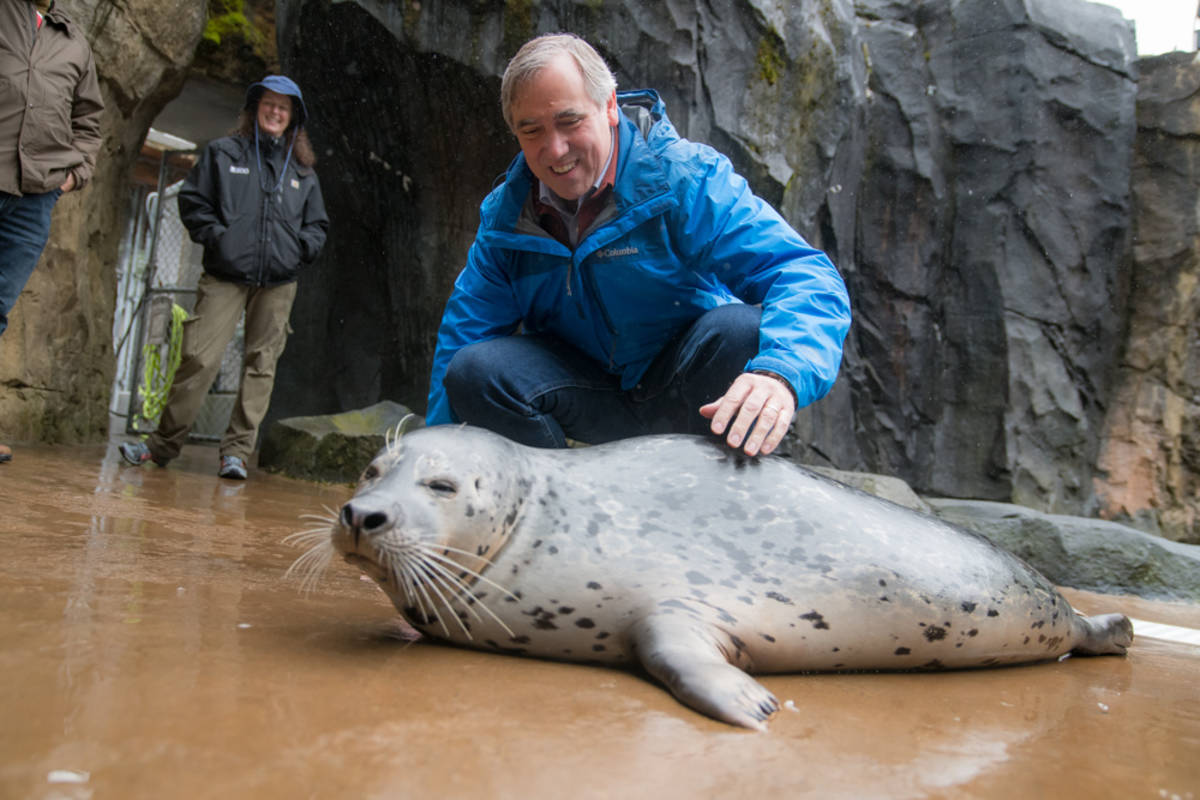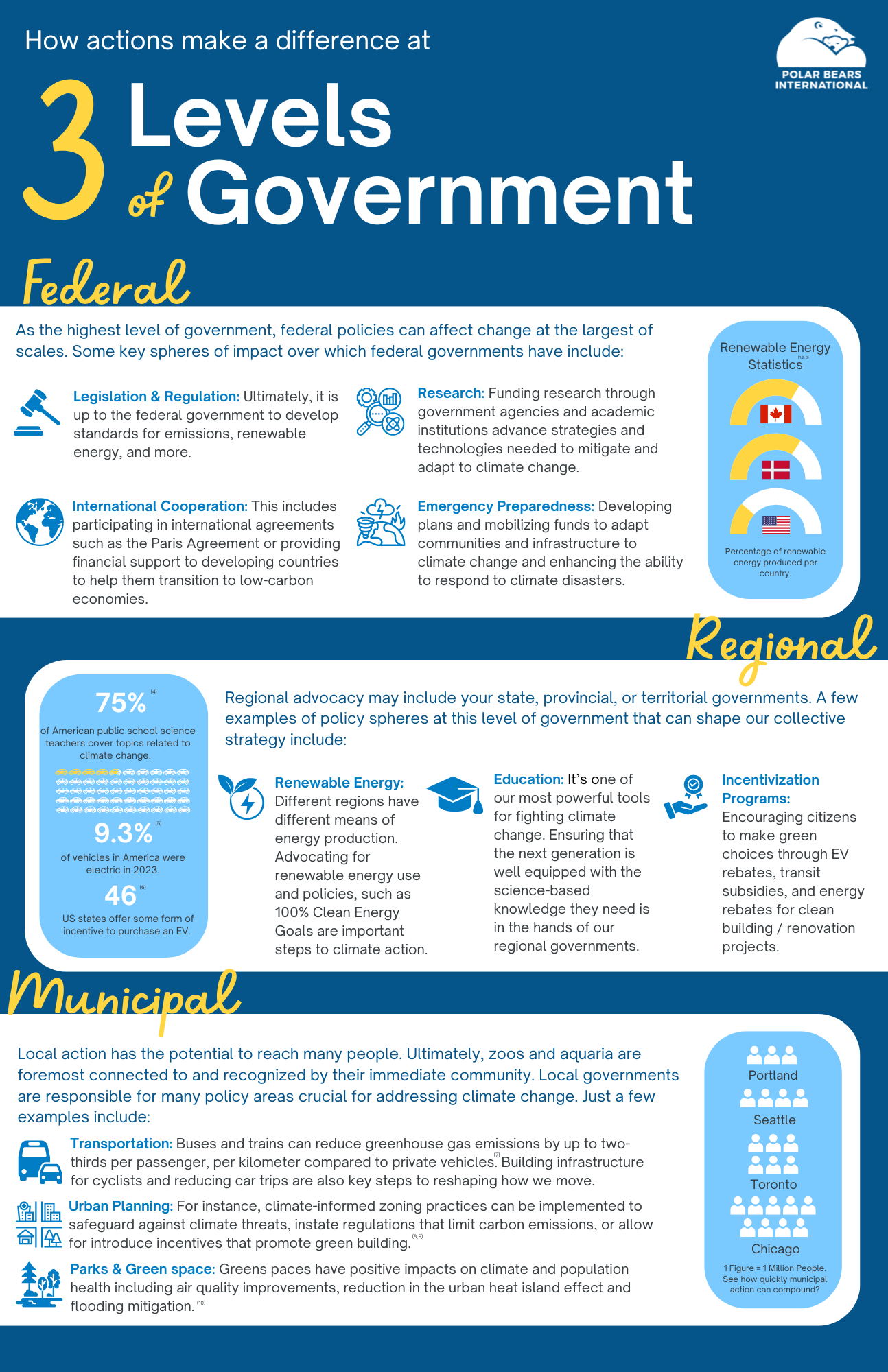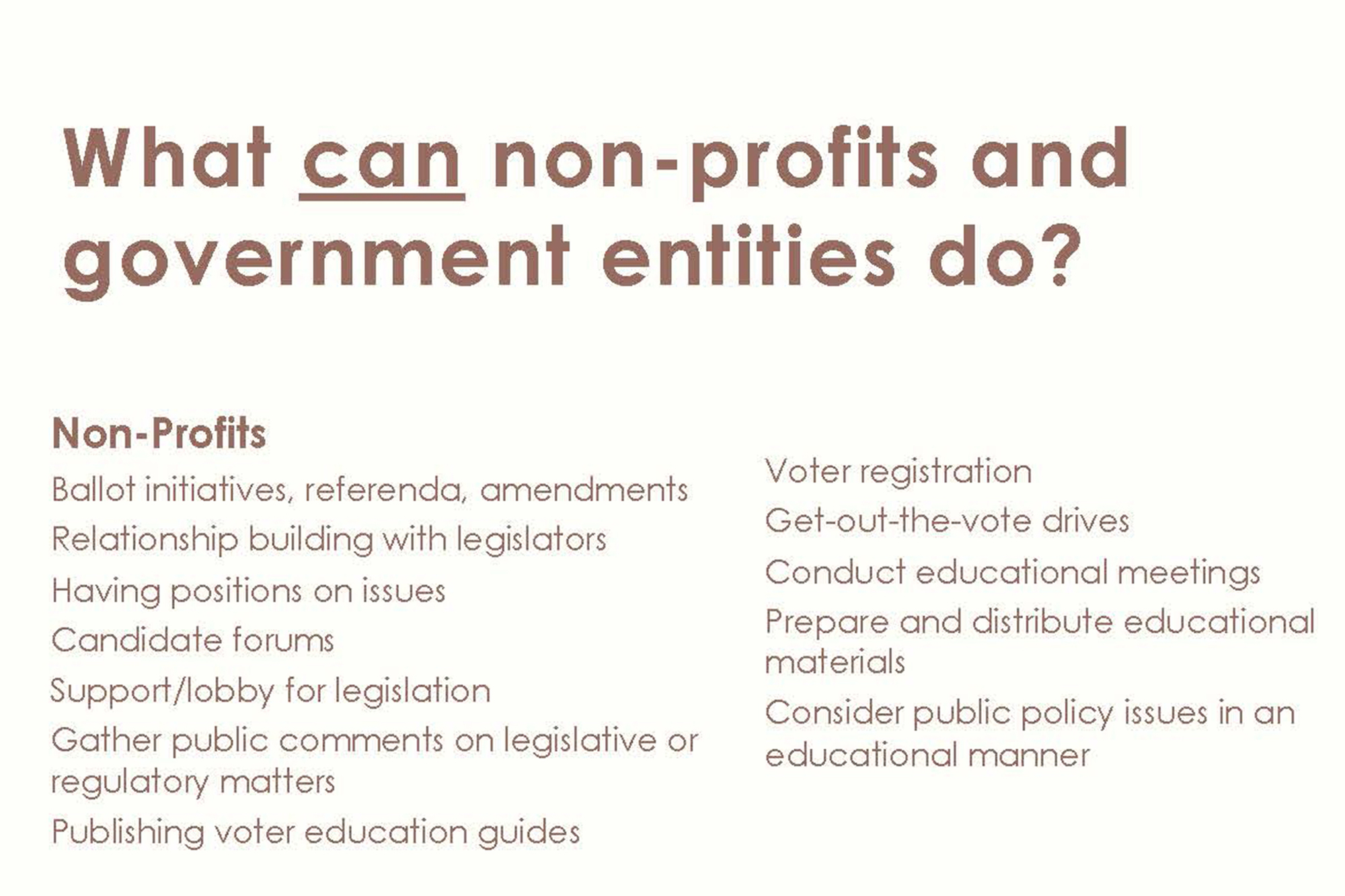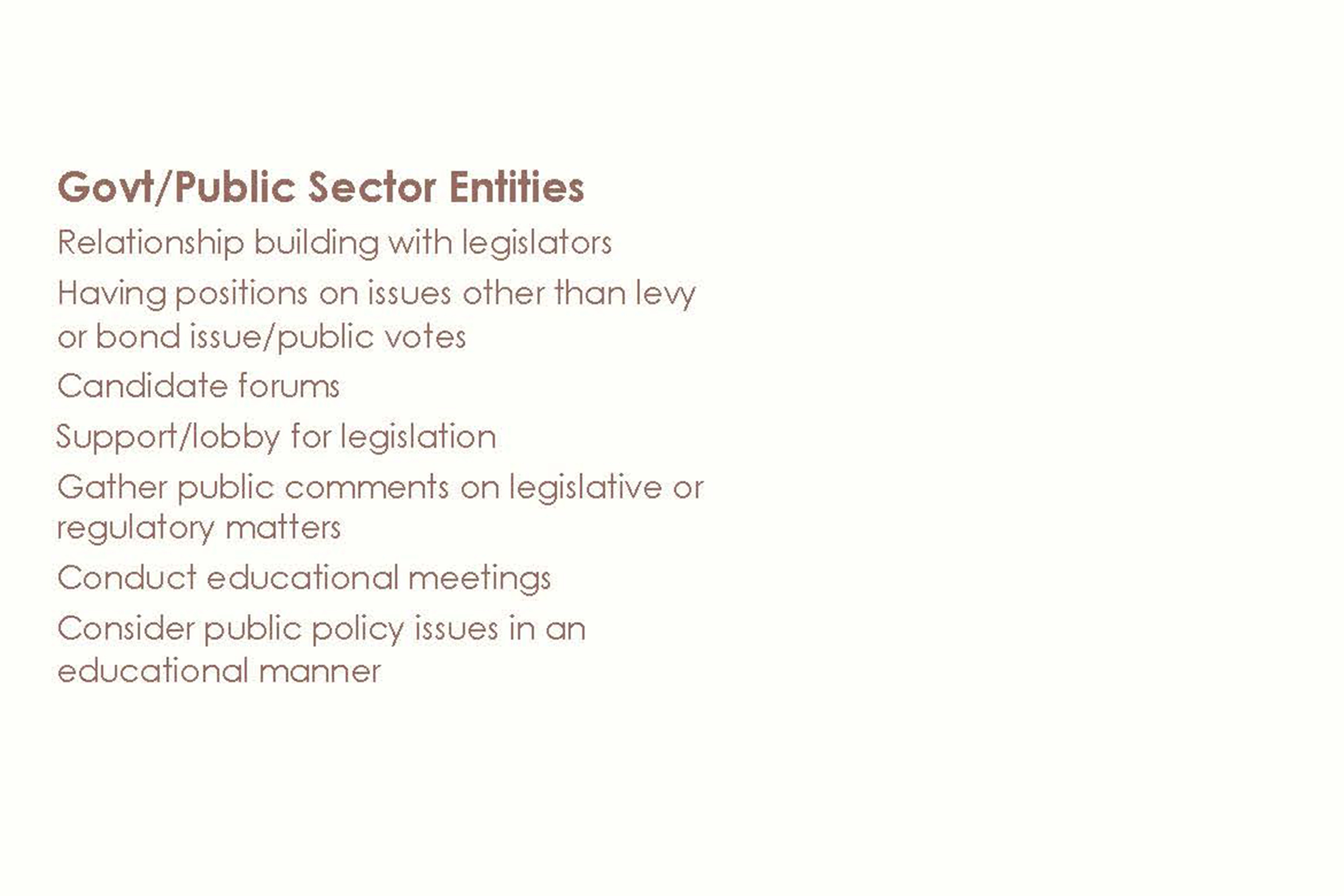Module 5A: Focus

Building Relationships with Elected Officials
Zoos and aquariums play important roles in our communities as centers of economic activity, education and conservation, and elected leaders understand this. Governments can provide important funding and other resources to support our programs. They can enact laws that advance our priorities. In turn, they rely on us to provide on-the-ground information. By building relationships we can work together to create system-level change.
Government affairs at zoos and aquariums?
Depending on the size and type of your organization, you may have a government affairs team or leadership team that manages your org’s government relations. Find out who those people are. Are they working with electeds on climate or conservation issues? Do they host tours with them?

Photo: Oregon Zoo
Senator Merkley with a seal.
Hosting site visits with electeds
Meeting with your elected leaders in the state capital, Washington, D.C. is important — but bringing them to you can have an even greater impact.
A tour of your zoo, aquarium, or field conservation site offers a powerful opportunity for decision-makers to experience your work firsthand. Seeing it in action makes it real, memorable, and more likely to stick.
For example, it’s one thing to tell a senator about your polar bear conservation work — but it’s another thing entirely to take them behind the scenes, introduce them to the keepers leading the efforts, and let them see the science in action. That kind of experience stays with them.
Tips for a successful tour with electeds:
Do your homework. Learn about their priorities and where your common ground is. Can you help each other solve problems? Be strategic about what to include and what not to include in the trip, based on their interests, values and politics. For example: some conservative leaders may not prioritize advancing endangered species recovery, but they might be keenly interested in youth development.
Keep it short. An hour may be the most you can get, so focus on a few tour stops that tell your story and build a case for your impact and needs. Most people know zoos and aquariums as beloved community attractions where families can see animals and make memories together. Far fewer understand our collective conservation impact in the wild. Show them something that will make them say “This is amazing, I had no idea your zoo/ aquarium did this kind of meaningful work.”
Kids! Electeds love connecting with youth – whether it’s a teen program or 2nd-grade campers. This is also a significant opportunity for youth to understand the power and influence they have as constituents.
Keep it fun. Include great animal photo ops! Their communications team will love you for it. Photos and videos will come in handy on social media and help the elected official’s staff with other reporting and storytelling efforts.
Ask. If you have an ask (and you should) - make it clear and to the point. Connect it to something they’re learning on the tour. For example: meeting youth from your education program and hearing how it’s improved their lives will make a case for why they should support funding your program. These kinds of stories and experiences will help them advocate for you.
Resource: Learn more about making the most of your tours with electeds through AZA’s August Recess Guide, which includes sample social media posts, issue briefs, meeting and tour invitations, and thank you letters for members to use to invite lawmakers to their facilities throughout the August recess and other district work periods.
Resource: Learn more about making the most of your tours with electeds through AZA’s August Recess Guide, which includes sample social media posts, issue briefs, meeting and tour invitations, and thank you letters for members to use to invite lawmakers to their facilities throughout the August recess and other district work periods.
Send them away with a one-pager highlighting what they learned. The American Geophysical Union (AGU) has abundant resources on advocacy, including a hub for how to create an effective one-pager. AGU is a leader in science policy and helps thousands of scientists advocate and interact with policy each year.
Elected official can’t make it? Invite their staff! As the gatekeepers, they are equally important. You should also consider organizing a tour designed specifically for staffers.
If you’ve never engaged with elected leaders, the prospect can seem pretty intimidating. But for the most part, they’re just regular people. As the saying goes, “make a friend before you need a friend.”
Direct engagement
Relationship-building doesn’t just happen in-person, of course. Engagement with electeds is an ongoing, two-way street. We want our electeds to think of us, and lean on our expertise, as they navigate broader issues related to education and conservation.
At every level of government - from city to federal – our elected leaders are working with organizations like ours to address climate change and protect species that are impacted. This includes policy to advance nature-based solutions, sustainable energy, and resiliency for at-risk species and habitats, as well as program funding.
Direct engagement may take the form of providing info, making an ask or saying “thank you.” Whether meeting in-person, virtually, or communicating by email or letter, here are some examples of direct engagement using a hypothetical “Polar Bear Act”:
Inform: Here’s why the Polar Bear Act is important.
Invite: use our physical space or social media to hold a press event or raise awareness about the Polar Bear Act.
Ask: please co-sponsor the Polar Bear Act.
Thank you: Thank you Congresswoman Borealis for co-sponsoring the Polar Bear Act!
There are many vehicles for these forms of engagement. Social media, guest engagement, Op-Eds, press events, emails, letters. The best way to thank electeds is publicly.
Who should we engage with?
Elected officials at all levels of government – from lawmakers in DC to small town mayors – are fair game! Each type of policymaker has influence over different areas of action. While engagement with those at the top of the ladder (think senators and representatives in Congress) is vital, so too is engaging with those further down.


Zoos and aquaria are pillars of our local communities. Advancing environmental policy in our cities and counties can have a larger impact than you think. Zoos and aquaria are uniquely positioned among conservation organizations to do this thanks to the trust and relationships we’ve built. Mayors, city councils, county commissioners, and more are important folks to connect with. They drive policy for millions of people and can have significant impacts on global carbon emissions. Imagine the individual impact of any of the below metro areas adopting policies promoting public transit, fleet electrification, renewable energy, white roofs, protected areas, green spaces, and more.
Imagine the impact that influencing policy in even just one of these major metro areas might have:
Chicago: >9 million people
Toronto: >6 million people
San Diego: >3 million people
Seattle: >4 million people
Portland: >3 million people
St. Louis: >2.5 million people
Cincinnati: >2 million people
Kansas City: >2 million people
Calgary: >1.3 million people
Louisville: >1.3 million people
Salt Lake City: >1.2 million people
Yes, you’re allowed!*
There are common misconceptions about what our organizations are allowed to say and do. The good news is all zoos and aquariums can engage in some form of advocacy. The type allowed is determined by whether you’re a non-profit or government-run organization.


Both are allowed to have positions on issues, engage with legislators, gather public comments and support legislation. Non-profits have a little more freedom in that they may be able to support ballot initiatives that people vote on.
*The information in this section is intended for educational purposes only and does not replace independent legal advice nor is an attorney-client relationship created. Each person and entity is encouraged to speak with legal counsel for legal advice.
Questions
Who is responsible for managing your organization’s government relations? Does your organization host electeds for tours at your facility? Do animal care staff participate in those tours?
Who are your U.S. Senators and Representatives? Do they serve on any committees related to climate, education, conservation or other relevant areas? What are your shared values?
Based on those shared values, what would an ideal tour of your organization look like?
Which local or state elected officials champion climate action and conservation where you live?
How can you partner with them to elevate these issues with your guests and communities?

Photo: BJ Kirschhoffer / Polar Bears International
Finished?
Continue on to Module 5B–Explore.











